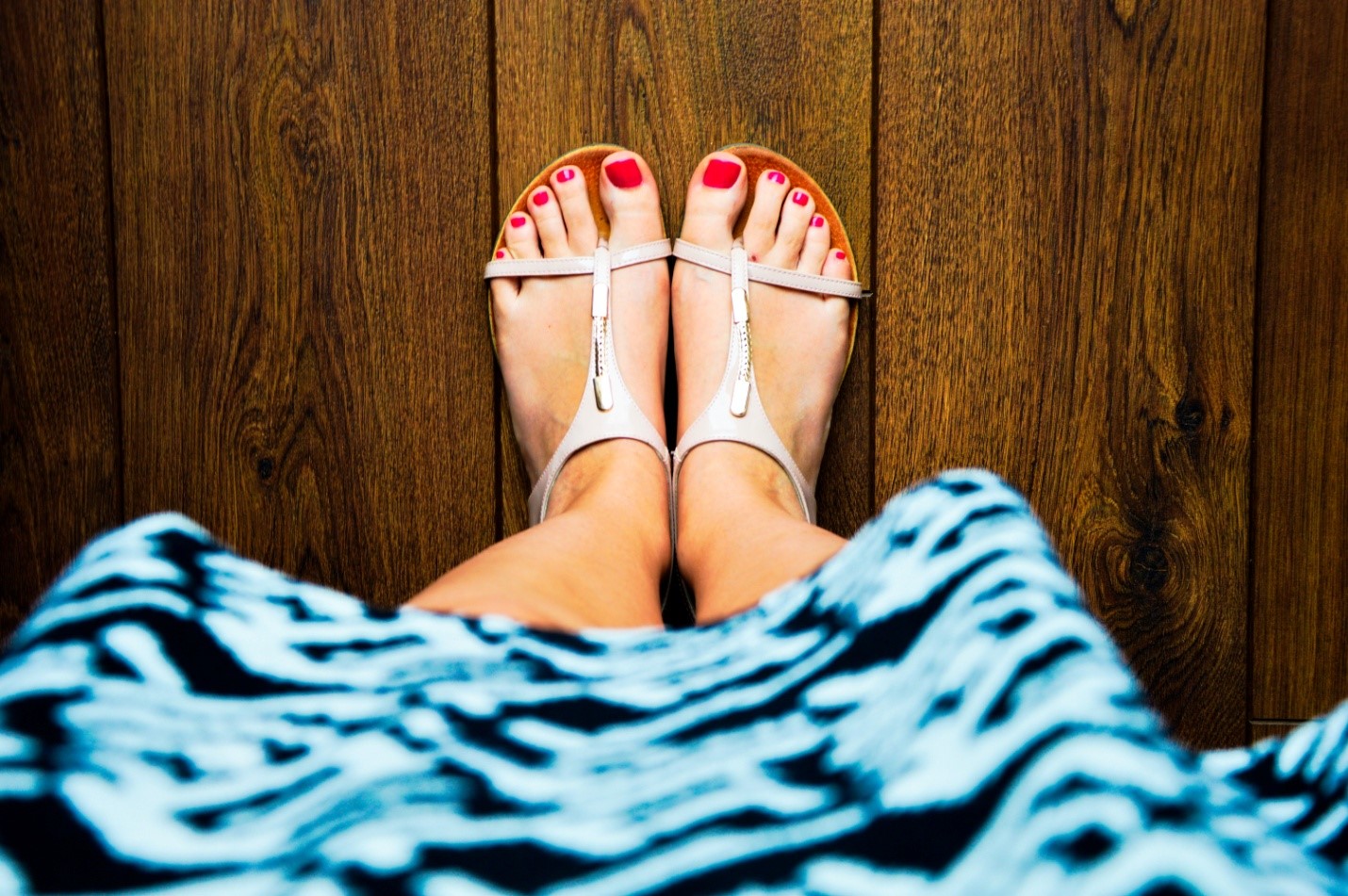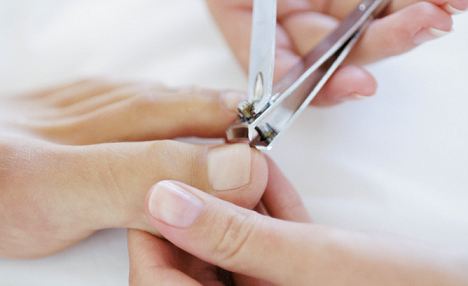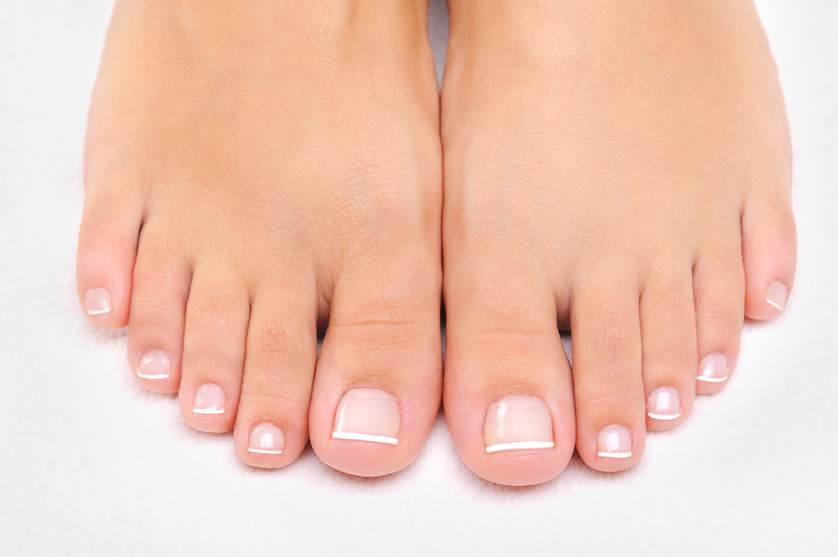Most people assume that trimming toenails is a simple process that involves clipping away grown nails and waiting for them to re-grow. It may sound easy, but if you do not do things the right and safe way, you can and up with an amputated foot due to infections caused by poorly cut and maintained toenails. Medics have warned that trimming nails the wrong way can lead to growth of fungus, painful ingrown nails and even introduction of dangerous bacteria that could lead to toe amputation or other health complications. Here are 7 Safety things to remember while clipping toe nails:
1. Cut your nails when dry
There is a common misconception that nails should be out when wet. This idea has further been pushed by unprofessional pedicurists who begin clipping away as soon as they take your feet out of water. As much as wet nails appear easier to cut, it is damaging to trim your nails when they are wet. Wet nails will tear and bend, and trimming wet nails can even destroy the skin around the nails. It is important to wash and carefully dry your toes before you start trimming.
2. Make small cuts
One of the most damaging things you can do to your toenails is to shove the clipper right into the free edge and chop it off. The force can yank off skin from around the nails. It can also cause blood clots around the nail, especially if the clipper was not very sharp. To make it easier, start by doing small clips from the top as you work your way down. Remember to do this in a clean and clear surface where you can collect all the nails when you’re done. Avoid doing this is heavily carpeted areas, as the nails are likely to get lodged inside the carpet. You should also never trim your toe nails near foods and beverages as they can get into food and choke you or someone who consumes the food. Moreover, it is disgusting to find pieces of nails in foods and drinks.
3. Maintain hygiene during the whole process
Before you start trimming your nails, make sure your nail clipper, brushes, and any other tools you plan to use have been sanitized. Use alcohol to sanitize the clippers and warm soapy water for your brushes. Soak your toenails and scrub your feet before you start trimming. Water softens the nails and cuticles and prevents splitting of nails especially if you have brittle nails. Washing your feet before the trim also means less transfer of bacteria into your nails. Make sure they nails are completely dry before you start trimming.
4. Do a straight cut
Most people who cut their own toe nails and up with a rounded edge shape. Avoid this shape and opt for a straight cut shape instead. This is because rounded edged nails are prone to developing ingrown toe nails. Doing a straight cut is easier done by doing two cuts. Start by placing the nail clipper on the side of the nail to create a straight edge. You then remove the nail by following the line of the straight cut that you made.
5. Do not get too deep
It can be tempting to keep trimming your toe nails, but you should always bear in mind that over trimming can be dangerous. The desire to make the nails too short so that you do not have to bother with them for a long time can be overwhelming. For others, the need to trim is pushed by a compulsion they have created out of habit, and then there are people who confess that they keep trimming so that their shoes can fit better. Whatever your need for excessively short nails is, always remember that if you cut too deep, you and up exposing the sensitive skin under your toe nails. This can lead to bacterial infections that may even interfere with walking. If you want to maintain your cuticles, use a cuticle stick. You can get them at most stores in the beauty and health section. Never cut your cuticles, as this may lead to bleeding and serious infections.
6. Use the proper tools
Not all tools are equal when it comes to nail trimming. Avoid the temptation to reach for a sharp knife, scissors or razor blade to cut your nails. Instead, get a good nail clipper or scissors specifically made for manicures. Nail clippers meant for toenails are always generally larger than the one made for finger nails, because toe nails tend to be tougher. Not using the right tools can create unnecessary tension to your nails, cause tears and make the whole process slow and frustrating. Make sure that your replace your clippers frequently. Blunt or rugged clippers can cause injuries especially when you try to force them against your nails.
7. Pay attention to the pinky
The smallest toe, also known as the pinky, receives a lot of stress on a daily basis. It is the one that is often squashed into shoes that do not fit well, and with time, the nails always get hardened and smaller, with a buildup of dead skin. It is advisable that you gently file the pinky. Move the nail file in one direction. Do not drag it back and forth. Unless your pinky nail is too long, filling is often good enough.
Final Verdict
Ensure that you trim your nails as often as possible so that you do not get long and hardened nails. It is recommended that your toe nails should be between 1-2 millimeters (10.04-0.08 inches). There is no time limit on how long you should wait before trimming your nails. Everyone’s toenails grow in different speeds, so you will have to determine the duration it takes before the nails surpass the recommended length. You should always wear the right size of shoes. Smaller or tight shoes put unnecessary pressure to the nails and may even change their shape and appearance. As soon as you develop any type of infection around your toenails, consult a doctor before it spreads or becomes more difficult to treat.



